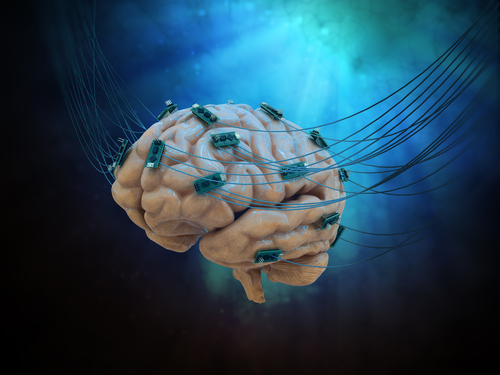New Insight May Unveil Ways to Lessen Side Effects of Deep Brain Stimulation in Parkinson’s Patients

Distinct connections between nerve cells in the brain may explain why some Parkinson’s disease patients develop impulsivity and behavioral problems after deep brain stimulation (DBS) therapy, according to a recent study.
These findings may help make DBS safer and more effective by adequately targeting the regions in the brain responsible for motor control.
The study, “The structural connectivity of subthalamic deep brain stimulation correlates with impulsivity in Parkinson’s,” was published in the journal Brain.
Subthalamic deep brain stimulation (STN-DBS) is a surgical treatment intended to ease Parkinson’s motor symptoms, including tremor rigidity and bradykinesia (slow movements). The procedure involves implanting a device that generates electrical impulses in specific regions of a patient’s brain.
Patients who receive DBS may also be able to reduce or stop taking dopaminergic therapies such as levodopa — a precursor to dopamine, the missing neurotransmitter in Parkinson’s disease.
But in some patients, DBS stimulates neuropsychiatric symptoms, most commonly impulsivity and mood elevation.
“Some patients develop new problems with controlling their impulses and behaving recklessly after this procedure, which can give rise to personal problems and increase the strain on their families,” Philip Mosley, PhD, the study’s lead author, said in a press release. “These impulse-control and behavioural problems limit the improvement in quality of life enjoyed by the majority of patients who undergo this procedure.”
Neuropsychiatrist Mosley and researchers at the QIMR Berghofer Medical Research Institute in Australia investigated which factors could be responsible for the association between DBS and impulsivity. They hypothesized that connectivity between neurons prior to therapy as well as how DBS stimulated certain brain regions could be important contributors.
“We wanted to find out if there was a subtle difference in the way stimulation was affecting the brains of those people who developed these psychiatric side-effects, and if by exploring these differences we might be able to work out how to stop it happening altogether,” Mosley said.
They analyzed a total of 55 patients with Parkinson’s disease, including 17 who had a history of impulse controlled-behaviors before the DBS procedure. These included gambling in 10 patients, hypersexuality in nine patients, compulsive shopping in three patients, deregulated levels of dopamine in two patients, binge eating in one patient, and hobbyism also in one patient.
Impulsivity was evaluated using a combination of neuropsychiatric tools and engagement in a gambling paradigm using a virtual casino.
All participants were assessed for impulsivity at the beginning of the study and then again three months after DBS surgery.
“We used a ‘virtual casino’ that we had previously developed, which simulated ‘real-world’ impulsivity, and looked at how the brain networks influenced by DBS affected gambling,” Mosley said. “Our participants played the casino before DBS and again once their stimulator was implanted and turned on, so we could quantify whether stimulation influenced them to bet in a more risky manner.”
Additionally, the team used different imaging techniques to map the connections between nerves that were being stimulated by DBS’ electrodes.
Overall, 17 participants developed clinical signs of impulsive behavior linked to DBS. Past or present impulse controlled-behaviors did not seem to be predictive of behavior changes after DBS.
Those who had a prior history of impulse controlled-behaviors “also did not differ in postoperative neuropsychiatric measures or gambling behaviours,” the researchers wrote.
Importantly, when DBS stimulated a part of the brain called the prefrontal cortex, participants were more likely to place higher and riskier bets.
“This region of the brain is important for planning behaviour and inhibiting inappropriate actions, so it makes sense that stimulation of this part of the brain can change behaviour in this way,” Mosley said.
The researchers also observed a significant association between behavioral changes after DBS and a strong connection between the stimulation site and a region of the prefrontal cortex known as the orbitofrontal cortex.
“This was a fascinating finding, because this region has been shown to be important in how the brain evaluates a desired goal and compares it to an actual outcome, in order to work out if behaviour should be modified,” Mosley said.
“It is possible that these individuals developed such significant problems because their brains weren’t able to perform this function, which meant that they didn’t link poor choices to negative outcomes, and therefore didn’t learn from the experience,” he said.
When the researchers evaluated the relation between motor symptoms and changes in behavior, results showed that impulsive patients were more likely to have worse motor symptoms after DBS and that “improvement in motor symptoms was associated with greater stimulation of the motor subregion of the STN.”
“Overall, these findings imply the existence of a connectivity target that could optimize motor symptoms whilst minimizing neuropsychiatric side effects,” and highlight the importance of accurately targeting brain regions for DBS stimulation, according to the study.
These findings may help surgeons and neurologists decide where to place DBS electrodes to maximize the therapy’s benefits, while lessening the risk of neuropsychiatric side effects.
“Specifically, knowing which connections are harmful or helpful will assist neurologists and neurosurgeons decide where best to place the DBS electrodes and how to adjust the device postoperatively so that only regions of the brain responsible for treating the motor symptoms of Parkinson’s disease are stimulated,” Mosley said.






